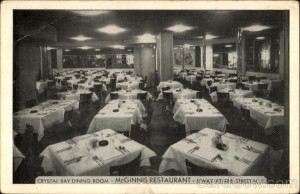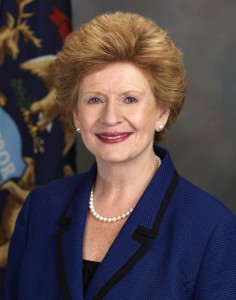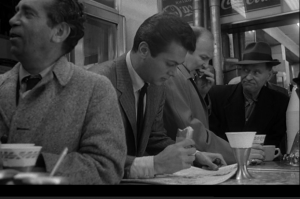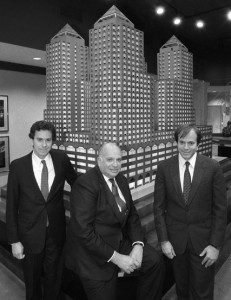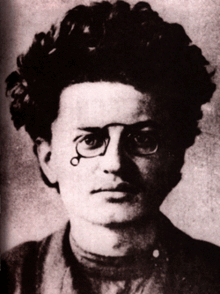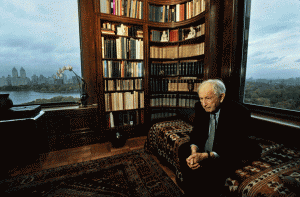For many years the McGinnis Restaurant on New York’s Broadway (there was also a branch in the Sheepshead Bay neighborhood of Brooklyn) dispensed a lavish, rare roast beef sandwich. Its rival was The Brass Rail on nearby Seventh Avenue. The Brass Rail was adjacent to the Roxy movie palace (named after the showman “Roxy” Rothafel and demolished to make way for undistinguished office towers). The Brass Rail specialty was “The French Dip”. This was a roast beef sandwich on a mini-baguette dipped in a savory beef gravy. (Messy. But not as messy as the Chicago Beef Sandwich, a favorite in the Windy City). The best of all New York City roast beef sandwiches was served at Shine’s on 7th Avenue between 33rd and 34th Streets near Penn Station. There a stately African-American man in a chef’s hat carved slices behind a counter from a vast roast with surgical precision. On the more pedestrian side, HG liked the roast beef sandwiches served at many of New York’s old fashioned Jewish delicatessens in Brooklyn and the Lower East Side. A nice smear of chicken fat on seeded rye. Roast beef. Coarse salt. Black pepper. Sliced sweet onion. In the days when Harlem was a Jewish neighborhood, there was a Harlem delicatessen (name, alas, forgotten) that served the sandwich and attracted customers who had to patiently wait in a long line in order to enjoy the treat. The Chicago Beef and the Philadelphia Cheese Steak never caught on in New York. The New York attitude: “Why hide the flavors of delicious rare roast beef carved from a prime rib, corned beef, pastrami and brisket?” Why, indeed? HG/BSK had a delightful Saturday tradition after shopping at Bloomingdale’s.. HG/BSK would visit nearby Dover Delicatessen and pick up roast beef, ripe Liederkranz cheese, a sliced rye bread, potato salad, cole slaw. HG/BSK liked their roast beef sandwiches with Russian dressing. The cheese was showered with chopped onions and paprika. Much fun.
The Roast Beef Sandwiches Of Yesteryear
March 18th, 2014 § 1 comment § permalink
When The Great White Way Was Appetizing
March 17th, 2014 § 0 comments § permalink
There is a glittery expanse of Montparnasse in Paris that is filled with movie houses, creperies and four landmark restaurants. The super-pricey (and worth it) Le Dome which serves the best grilled sole in Paris (the fish swims in sublime lemony melted butter). La Rotonde which has fine oysters and steak tartare. Select (nice for a pre-dinner drink). La Coupole (beautiful art deco decor and fine oysters but everything else is miserable in this chain-operated trap for tourists). Montparnasse reminds HG of New York’s Broadway in its glory days (which ended in the 60’s). There were the big time movie houses: Paramount (where Frank Sinatra thrilled the bobby soxers); Capitol, Strand (all with stage shows in addition to first run movies)). Also Criterion, Trans-Lux, Palace, etc. Loads of good restaurants (mass and class) starting at 42nd Street and moving north into the 50’s where they gave way to auto showrooms. Here were some of them: Hector’s Cafeteria (good, cheap food); Rosoff’s (excellent roast duck); Turf (fine cheesecake); McGinnis’ (lavish roast beef sandwiches plus sea food specialties); Jack Dempsey’s (The champ served fine steaks). Just a few steps oiff Broadway was Gluckstern’s, a top flight Jewish kosher restaurant (not to be confused with the OTHER Gluckstern’s that was on Delancey St.). Also just off Broadway was Dinty Moore’s (best corned beef and cabbage plus liver with onions and bacon). The unquestioned essential Broadway restaurant was Lindy’s. Immortalized in Damon Runyon’s fiction. Comedians like Milton Berle, Jack E.Leonard, Jack Carter and Henny Youngman topped each other with one liners in its environs. It was where the powerful columnist Walter Winchell lunched. Song writers, bookmakers, gamblers, press agents, actors, producers, musicians and other colorful folk filled the tables. The food, which ranged from Jewish-American specialties to superb pork sausages with eggs, was splendid. And, the cheesecake was legendary (even better than Junior’s or Turf). What happened to the wonderful New York cuisine that Lindy’s exemplified? Gone. The world changes and not always for the better.
HG Heroine (and a Bit of Favoritism)
March 14th, 2014 § 0 comments § permalink
Senator Debbie Satenow, Democrat (of course) of Michigan, is an HG heroine. The farm bill President Obama signed last month increases subsidies to fruit and vegetable farmers and emphasizes aid to locally grown, organic, healthful foods. The New York Times reported Senator Satenow “negotiated, prodded, cajoled and finally shepherded the bill through Congress over two and a half years.” Many thanks, Senator. The celebrity chefs get a lot of exposure but it’s folks like you who make sure that good food is on America’s tables. Here’s a bit of joyous nepotism: Restaurateur Daughter Victoria and husband/chef Marc Meyer pioneered farm-to-table menus at their three New York Restaurants (Five Points, Cookshop, Hundred Acres). They were the first to advertise the farmers, ranchers and fish-mongers from which they procured the wonderful ingredients that made up their dishes. Wonderful cooking that lets natural flavors shine.
Eating Cheap on the Path to Stardom
March 11th, 2014 § Comments Off on Eating Cheap on the Path to Stardom § permalink
More than 50 years ago, young actress BSK arrived in New York after a year at Milwaukee’s Fred Miller Repertory Theater. BSK had 75 dollars in her purse. Fortunately, she also had some good culinary advice from experienced actors who had been living in New York for some time: If hungry while making the rounds of casting offices go to Grant’s on W. 42nd Street (two hot dogs for a quarter and french fries for 12 cents) and the Horn & Hardart Automat at 1557 Broadway (opened in 1912, the first Automat in New York). Yes, the theater district had many cheap food options for the famished, talented and impecunious. One of HG’s favorites (might have disappeared before BSK arrived) was Romeo’s. In its 42nd St. window a big guy in a tall chef’s hat plucked spaghetti from a cauldron of boiling water, plated it and added a dollop of very red meat sauce. The spaghetti (and garlic bread) cost 25 cents. There were also a few Elpine locations on Broadway. They dispensed hot dogs and papaya drinks. You can view an Elpine in the movie Sweet Smell of Success.” Tony Curtis (as press agent Sidney Falco) grabs an economical meal there. BSK received another piece of New York advice. Register with Brown’s Temporary Personnel. You’ll be able to work part time and still have an acting career. BSK followed the advice. Brown’s sent her to HG’s public relations office. The rest, as the cliche would have it, is history.
Turkish Pistachio Nuts: Best Of The Best
March 8th, 2014 § 0 comments § permalink
HG has always loved roasted, salted pistachios. When HG was a little fellow growing up in The Bronx, HG and beloved older sister, the late Beulah Naomi Katz, would stroll the Grand Concourse. Always stopped at J.S Krum Ice Cream Parlor. Picked up a generous bag of pistachios for munching during our perambulation. In those days, pistachio shells were always, for no apparent reason, dyed red (the pigment stained our fingers). Sometimes a bag of pistachios accompanied HG and Beulah during a movie matinee at Loew’s Paradise on the Concourse, one of the great movie palaces. SJ is aware of his father’s love of pistachios. One of SJ’s Christmas gifts for HG was a big bag of Turkish pistachios from Sahadi’s, the middle eastern food emporium on Atlantic Avenue in Brooklyn. The best pistachios ever — lighter, crunchier and more concentrated in flavor than typical brands (you can buy them online from Sahadi’s). HG likes to eat them with the last of dinner red wine accompanied by Medjool dates and Mascarpone (or Roquefort) cheese. Also nice with Port. If you are in Brooklyn, be sure to visit Sahadi’s. Be astonished at the vast array of olives, spices and good things from the middle east.
Shakshuka!
March 7th, 2014 § 0 comments § permalink
Shakshuka. Love the sound of the word and love the taste of the dish. The origin is Tunisian. It is a popular breakfast or lunch dish in Israel. HG/BSK dined on it last night (with gusto). Canny BSK made enough sauce so the dish could be revisited for breakfast (once more consumed with gusto). The recipe comes from Jerusalem: A Cookbook by Yotam Ottolenghi and Sami Tamimi (book was a Christmas gift from Gifted Daughter Lesley R.). Shakshuka is made by creating a sauce of tomatoes, peppers, tomato paste, garlic, olive oil, cumin and plenty of harissa (the fiery Middle Eastern condiment). Egg yolks are poached in the thick sauce and some poached eggs (yolks and whites) are added upon serving. Served with zaatar (Middle Eastern spice mixture) dusted Greek yogurt and warm pita. The combination of the runny egg yolks and creamy yogurt in the spicy sauce is a revelation. Every last drop is wiped up with pita. Jerusalem is filled with great recipes. Besides shakshuka, HG/BSK have tried sweet and sour fish and turkey/zucchini burgers with green onion and cumin. Taste explosions. There’s a great human story behind the partnership of Ottolenghi (an Israeli Jew) and Tamimi (a Palestinian Arab). The New Yorker Magazine did a profile of them last year. The men met in London and have created five restaurants and a delicatessen in that city. All are roaring successes. There’s a moral in this somewhere.
William Zeckendorf, Jr.
February 15th, 2014 § 2 comments § permalink
William Zeckendorf, Jr., real estate developer and philanthropist, died recently in Santa Fe. Born in New York, son of the legendary, flamboyant developer William Zeckendorf, Sr., Bill was a quiet, cerebral version of his father. But, like his father, he took big financial risks resulting in major ups and downs. The sons of Bill, Jr. are real estate titans in New York these days, developing and selling condominiums at astronomical prices (they recently sold a $40,000,000 condo in a building they developed on Central Park West). Bill, Jr. hired HG (late 70’s or early 80’s in HG’s memory) to thwart community opposition and publicize a risky development–a 33-story condominium tower on the northwest corner of 96th Street and Broadway called The Columbia. Lots of development plans for the site had failed. This was before the West Side became a fashionable address for the upwardly mobile and Broadway still contained many nocturnal hookers and quite a few outdoor drug markets. HG met with officials of the local elementary schools and worked out an arts program for the construction fence of the condo. Sixth and seventh grade students used the fence as a revolving art show painting pictures on themes like “My dream home”, “Favorite New York building,” “My hero,” etc. HG organized a jury of community luminaries (including some anti-development firebrands) and prizes were awarded monthly for best efforts. It all received loads of publicity and TV coverage and focused attention on the development as a family friendly and community involved environment. The condos sold quickly and Bill, Jr. went on to do major developments on Union Square, Eighth Avenue and other locations until getting whacked by financing disasters. HG always enjoyed his New York business meetings with Bill, Jr. They took place at the Sparks Steak House. Bill, Jr. thought the steak house had the best wine list in town and introduced HG to many splendid vintages. HG has delicious taste memories of cabernet from the Jordan winery in California. Bill, Jr. was a member of the distinguished wine lovers association, Confrerie des Chevaliers du Testavin. He inherited his wine love from his father. William Zeckendorf, Sr. headed the Webb & Knapp real estate firm with headquarters on midtown Madison Avenue. Its conference room was a circular space on the top floor of the building. That’s where William, Sr. hosted his legendary business lunches. HG was present at one (in 1962 or 1963, a few years before Webb & Knapp went bankrupt in 1965). HG was present because HG had been hired to do a publicity project for Mile High Center, a W & K development in Denver. As usual, a superb French wine was served at lunch (by a quite formal butler). The majority of the luncheon guests were concerned bankers and others who were owed a great deal of money by Zeckendorf. One of the bankers sipped his wine. “Say, Bill, this is great wine. How much would a bottle of this good stuff cost?” Zeckendorf stated the price. The banker blanched. The others at the table looked shocked. Yes, William Zeckendorf may have been going bankrupt but he never lowered his wine drinking standards.
No Tip Trotsky
February 14th, 2014 § 0 comments § permalink
Last week, a philosophical HG posted his thoughts about defeat and the Denver Broncos Super Bowl debacle. HG quoted the Russian revolutionary Leon Trotsky’s remark about defeated adversaries and “the dustbin of history.” BSK, the love of HG’s life, said: “I am sure you are the only person in the United States who linked Leon Trotsky with Peyton Manning.” Made HG think about some Trotsky connections. HG’s acquaintance and dining companion, Bernard Wolfe, the late novelist and science fiction writer, was Trotsky’s secretary-bodyguard in 1937, some three years before Trotsky was assassinated in Mexico City by Ramon Mercader, a pick axe wielding Stalin agent. Wolfe wrote an interesting novel about Trotsky’s Mexico City exile: The Great Prince Died. In the novel, Victor Rostov (the Trotsky character) expresses regrets about some of his murderous acts following the Bolshevik rise to power. (HG believes the real life Trotsky was devoid of what he would term “bourgeouis sentimentalities.”). During a three month period in 1917, Trotsky lived on Vyse Avenue in the East Bronx, a few blocks away from where HG’s parents lived with their two year old son, Bernard (HG didn’t come along until 1929, an unwelcome surprise for his Mom). HG’s father saw Trotsky dining in a neighborhood restaurant. A waiter told him that Trotsky would not leave a tip. Claimed it would demean the waiter, a member of the proletariat, and turn him into a lackey. Trotsky was not a favorite of the restaurant staff. When HG was a youngster, HG and his father paused to listen to soap box (when was the last time you saw a soap box?) orators in Union Square Park. A fiery Yiddish speaker called Trotsky: “Ah mench mit ah goldeneh kup.” (A man with a golden head). HG’s father, a confirmed David Dubinsky/ILGWU/ labor union socialist, despised Trotsky and all communists. Remembering Trotsky’s murder, he said: “Trotsky was lucky a Bronx waiter didn’t stick a fork in his golden head.”
Obituaries
January 30th, 2014 § 0 comments § permalink
Every morning, while sipping cafe au lait, HG reads the daily obituaries in the New York Times. It is a habit that smacks of schadenfreude (defined as pleasure in the misfortunes of others). Yes, muses HG while reading of the demise of a distinguished individual: “With all of your honors and renown you are very dead. HG is very much alive.” There is also a sobering thought. As an octogenarian, HG may soon (hey, not too soon) be an obit subject. The star of a recent Times obit page was Martin S. Bergmann, 100, psychoanalyst. Bergmann played the philosopher in Woody Allen’s Crimes and Misdemeanors. The photo illustrating the obit fascinated HG. There was Bergmann, looking glum, seated on a Persian rug clad psychoanalytic couch (obviously a copy of Freud’s lounge). Bergmann’s office, richly wood paneled and containing a big bookcase of reference volumes, had huge windows with spectacular view of Central Park, the Reservoir and the West Side (the twin towers of The Beresford on Central Park West clearly visible). Office had to be on a high floor of a Fifth Avenue building. Very super-prime, super- expensive real estate. So. In order to cover the nut, what was Bergmann charging his analysands? The obit raised another question. Bergmann was raised on an Israeli kibbutz. The kibbutz paid for Bergmann to come to American and study agriculture. Bergmann abandoned agriculture and never returned to Israel. Did he ever pay back the kibbutz? Yes, death raises many questions. HG’s response to death is Italian (HG paraphrases): “Life is short. Brutish. And, it ends in pain. So, in the meanwhile, let’s enjoy a good meal.” With ample wine, adds HG.
Pete Seeger R.I.P.
January 29th, 2014 § 2 comments § permalink
April 1949. HG was in his third year at the uptown campus of the City College of New York (CCNY). The tuition free college was dubbed “the Harvard of the proletariat.” Tough to get into and an academically rigorous institution, CCNY was noted for producing Nobel Prize winners, scientists (Jonas Salk, conqueror of polio, among them), journalists and left wing activists. That spring some 65 years ago, CCNY was gripped by a student strike, a protest against anti-semitism in the Spanish language department and racial segregation in the college dormitories. The misguided college administration called in the police. With cries of “No cops on campus”, students battled the police. (HG was whacked in the arm with a billy club). Some 16 students were arrested. HG remembers a pal shouting defiantly as he was hurled into a paddy wagon. Big rally the next day in support of the jailed students (almost immediately released by a sympathetic judge). And, there on an improvised platform was Pete Seeger. He was 29 then but already an icon in folk music and left wing circles. With Pete leading, the campus burst into song. HG, his hand bandaged, shook hands with Seeger. “Keep fighting the good fight,” encouraged Seeger. Well, HG’s activism and political ardor cooled over the years. Pete remained the same, always present when “the good fight” was being fought. May that good, brave, talented man rest in peace.
